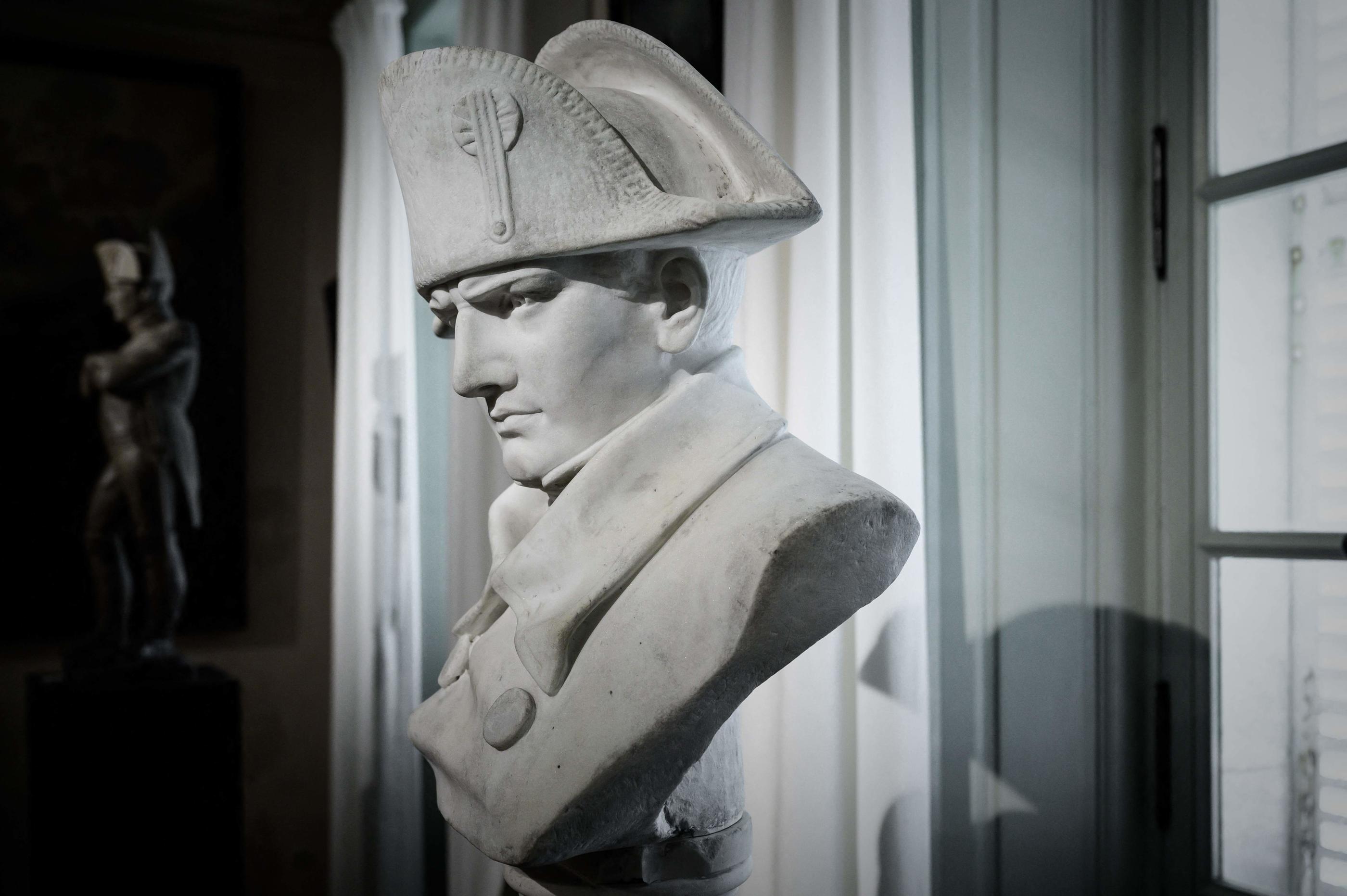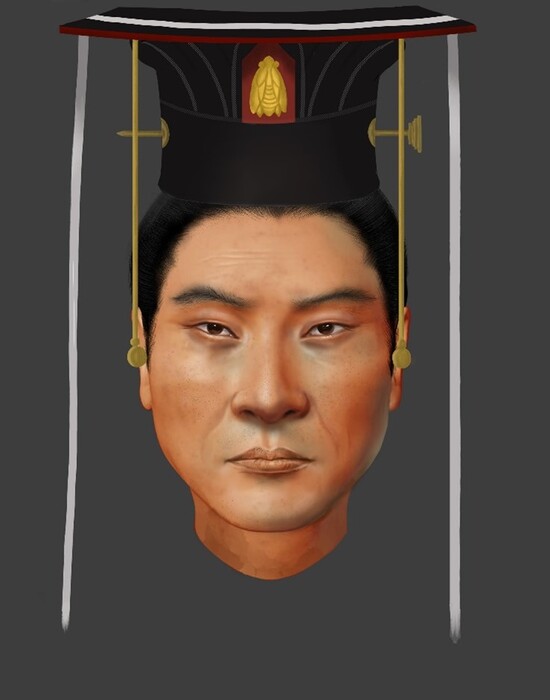On May 5, 1821, at 5:49 p.m. officially, exiled on the island of Saint Helena for seven years, the fallen Emperor Napoleon Bonaparte breathed his last at the age of 51.
Immediately, the Napoleonic legend was born.
Corsica becomes both a hero and a monster, a giant of history, with many paradoxes.
Between myths and realities, posterity has retained the glorious winner of Austerlitz or the creator of the Civil Code, but also the shameful contributor to the reestablishment of slavery in 1802. And has sometimes forgotten or distorted some episodes.
Napoleon was not small ... but very short-sighted
Bonaparte was affectionately nicknamed by his soldiers "the little Corporal", after the victorious battle of May 10, 1796 against the Austrians, in Lodi. However, this nickname quickly took a pejorative turn among the opponents of the one who was then First Consul of a still trembling French Republic. The English caricatured Bonaparte's physique from 1797. Dwarfism would soon characterize the character of Napoleon, for the British, who also exaggerated the size of his cocked hat to symbolize his thirst for power. They even went so far as to portray him as Lilliputian facing the giant King of England George III.
But unlike his caricature in reality, Napoleon Bonaparte was not small for his time.
According to his doctor François Antommarchi and his companion in exile, Louis-Joseph Marchand, the Emperor in fact measured 1.69 m while the average height of the French in the 19th century was around 1.65 m.
The emperor, if he was not a giant, was still taller than the average.
On the other hand, he was far from reaching the size of his dear grumblers who had to measure at least 1.76 m to join the imperial guard.
If the official painting has always made him a "great man", it has however omitted a detail.
Napoleon I was slightly short-sighted and wore glasses which have been found.
Napoleon and the rights of women
Was Bonaparte the gravedigger of women's rights as many say? If the Civil Code did legally establish a difference in treatment between husband and wife in 1804, this difference was already well established in French society, despite the French Revolution. As Éliane Viennot, author of “La France, les Femmes et le Pouvoir” (Perrin 2006), reminds us, the equality of 1789 does not concern the female sex. It is no coincidence that the members of the Constituent Assembly vote a declaration of “human rights”. And immediately classify women, along with servants and minors, in the category of "passive citizens", excluded from the right to vote.
Revolutionaries are imbued with the “naturalist” thought of the Enlightenment, which assigns each sex a very distinct role: one the public sphere, the other the domestic “kingdom”. The laws of September 20, 1792 establish divorce and recognize a principle of quasi-equality between spouses but this will not last. From May 23, 1795, a decree excluding women from political assemblies was published. And the Constitution of December 13, 1799 reserves the quality of citizen to men born and residing in France over 21 years of age who have registered in the civic register of their municipal district. The woman therefore no longer benefits from the quality of citizen and her “equality” of 1792. The drafters of the Civil Code will perpetuate this misogynistic vision of women but will not properly be at the origin of it.
"Creator" of modern Switzerland
It is a little-known aspect of the Napoleonic period, and yet Napoleon Bonaparte played a decisive role in the political evolution of the Swiss Confederation at the beginning of the 19th century.
The reasons were at first more military than diplomatic.
“
Above all, I need a border that covers Franche Comté;
a stable and solid government, friend of France ”declared General Bonaparte in 1802 when he organized“ the mediation ”at the origin of the creation of the Swiss federal state.
Until now Switzerland was above all a place of passage for revolutionary troops during the various campaigns of 1797 and 1800.
On February 19, 1803, the First Consul Bonaparte thus promulgated the Mediation Act which allowed Switzerland to benefit from a relative "independence" in the bosom of French influence.
“The Mediation Act laid the foundations for a new federalism which affirmed equality between the cantons within the Confederation, and which guaranteed freedom of conscience.
These 10 years of Mediation enabled Switzerland to become aware of itself, of the absolute necessity that it had to remain united in its diversity and to help itself in the face of adversity ”explains Gérard Miège, co-founder of the delegation of Swiss Napoleonic Remembrance.
Napoleon "Spiderman"
Less known than the caricature on his small size, Napoleon also took the features of a spider eager to take in his web all the “European flies” This once again British caricature will be very popular with the English population, very anxious to the idea of an invasion by French troops described as bloodthirsty. In other caricatures of the time, the French armies are transformed into a legion of innumerable apes, and Napoleon himself becomes "an ape-like being who ape the manners and customs of the Monarchy", as Pascal explains. Dupuy in the "The black legend of Napoleon or the images to the assault of the myth". This exotic and at the same time familiar bestiary aimed to give a brutal and inhuman image of the former revolutionary general.
Caricature of Napoleon as a spider.
Thomas Rowlandson, The Corsican Spider in his Web, published by Thomas Tegg on July 12, 1808 in London.
British Museum Collection
Addicted to cologne
Bonaparte was a huge consumer of cologne, revealed Élisabeth de Feydeau in her book “The great history of perfume”, published by Larousse editions in 2019. “The emperor was even crazy about it, it was said, of drink a few drops before each battle!
In 1810, there were consumption averages of thirty-six to forty bottles of cologne per month!
Or more than one per day, reports the historian specializing in the history of perfumes.
He would have learned to appreciate this beauty product during the expedition to Egypt.
"Suffering from the liver, he had to appreciate its active and invigorating side, as well as its pleasant fragrance without being tenacious", estimates the historian. "The Emperor will remain faithful to this famous water all his life, to the point of having it made during his exile in Saint Helena by the Mamluk Ali, who succeeded in developing this product with ingredients found on the spot" , adds Élisabeth de Feydeau, who also indicates in her book that he “had the fancy of taking baths at any time”.








/cloudfront-eu-central-1.images.arcpublishing.com/prisa/ZUSCQAAVDZB4ZG3O6HXHMJFWCI.jpg)
